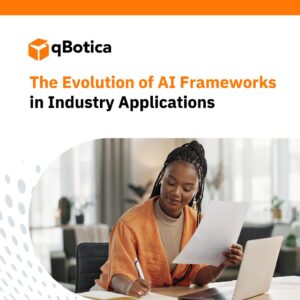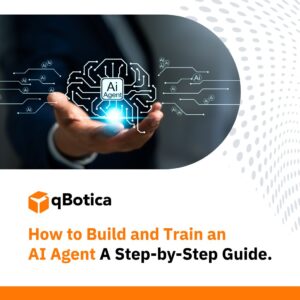Enter finance and accounting – two of the most numbers-laden and detail-oriented sectors in existence.
Here we’ll review how Robotic Process Automation can revolutionize finance and accounting departments. We’ll also present factors to consider before implementation and specific processes where automation can have the most impact.ERP vs. RPA: Old Enhances New
Most organizations utilize enterprise resource planning (ERP) software such as Oracle and SAP. But ERPs and application programming interfaces (APIs) require significant resources to program, code, and maintain. This is one of the most significant setbacks finance companies face in their pursuit to update legacy systems.
Fortunately, RPA software provides a seamless path to ERP enhancement. RPA is an intuitive software that works by mimicking a person’s actions and applying them to existing ERP systems, even automatically transferring information to other applications or departments, such as auditing a financial document and forwarding it on for review. As a result, Robotic Process Automation is a game-changer because it allows finance companies to easily automate tasks and make significant operational changes without re-engineering their entire ERP software.
Advantages of Using RPA for Finance and Accounting
1. Manual entry and human errors
Most finance and accounting professionals still spend countless hours entering information, staring at spreadsheets, and creating reports despite advances in technology. In the process, human errors are inevitable and one of the most common causes of unnecessary business loss. For example, Citigroup’s credit department famously checked the wrong box on a digital payment form that sent almost $1 billion to the wrong account.
RPA software bots eliminate that risk by seamlessly moving data across applications and mimicking activities such as clicking, typing, and opening and closing windows. These programmed operations dramatically reduce the number of manual entries and opportunities for human error.
2. Increase employee productivity and value
The term “work smarter, not harder” has never been more accurate than when it comes to using RPA in finance and accounting. RPA supplements the human workforce, allowing finance and accounting teams to achieve more work in less time, with fewer resources. For instance, Gartner predicts that RPA can save finance departments 25,000 hours of avoidable paperwork annually. As a result, accounting professionals can move away from data gathering, data entry, and bookkeeping and instead take on more advisory roles that put their judgment and consulting skills to use.
3. Get set for the future
Advanced cognitive technologies like RPA software are the perfect steppingstone for financial companies to dip their toes in the pool of futuristic developments. When paired with Artificial intelligence (AI) and machine learning (ML) systems, RPA software works even better through added features and abilities. For instance, while EPA systems such as Oracle can automate cash applications up to 50%, RPA combined with AI and ML can minimize human effort in cash processes up to 90%. By getting started with RPA software today, businesses can lay the framework to grow their automation footprint and futureproof operations as new technologies develop.
Business considerations before getting started with RPA
If you’re assessing RPA for finance and accounting tasks, consider starting with the most straightforward processes to get the most immediate and meaningful results. From our experience, finance and accounting businesses typically start by automating:
- Invoice data entry
- Cash applications
- Billing and invoicing
- Customer and vendor setups
Once you’ve established the need, look for an RPA provider that delivers ready-to-use software and hands-on support. qBotica’s DoqumentAI is simple to customize, integrates easily with existing data repositories, and doesn’t require a labor-intensive setup. Once implemented, DocumentAI can:
- Accurately capture up to 98% of data from any document layout
- Automatically learn from each document it processes
- Capture data up to 10 times faster than manual entry
- Integrate via RPA or API in an entirely adaptable environment
- Offer secure, cloud-based management
With DoqumentAI, you can also control how your RPA bots will function based on the task at hand. For instance, you might choose attended RPA bots to help your staff efficiently manage their front-end work. Attended bots act as virtual assistants, collaborating with your team to boost productivity on individual tasks. Unattended RPA bots, on the other hand, work on their own without any human intervention. You’ll want to utilize these independent bots to manage back-office processes at scale.
Common uses for RPA in finance and accounting
Now let’s explore the areas where RPA can save the most time and have the most significant long-term impact. Configuring a robot with data capture tools that can scan documents for critical information, move between computer programs, generate reports, and set up approval requests is effective for complex functions like:
- Improved financial reporting
- Purchase order and invoice processing
- Accounts reconciliation
- Data aggregation for reports
- Customer data management
- Tax returns preparation and payments filing
- Revenue audits
These complicated processes require strict attention to detail and are typically the most error-prone. When businesses don’t notice mistakes right away, such errors can be costly while leaving organizations vulnerable to legal consequences. Because RPA is rule-based, it is an excellent tool for detecting violations and catching when financial data doesn’t align as expected. These functions help with:
- Exception flagging
- Risk assessment
- Dispute verification and resolution
- Credit risk management
Time to make automation a priority
Incorporating advanced software tools like RPA is the first step for modern organizations to compete in this ever-changing digital world. The significant time savings and streamlining opportunities are reason enough for every financial and accounting department to invest in automation.
But that’s just the beginning. RPA allows finance departments to remain flexible and serves as the base layer for adding more intuitive and complex technologies, even ones that don’t yet exist. As a result, those in the finance industry that prioritize automation now will gain a competitive edge and position themselves for future AI success.











